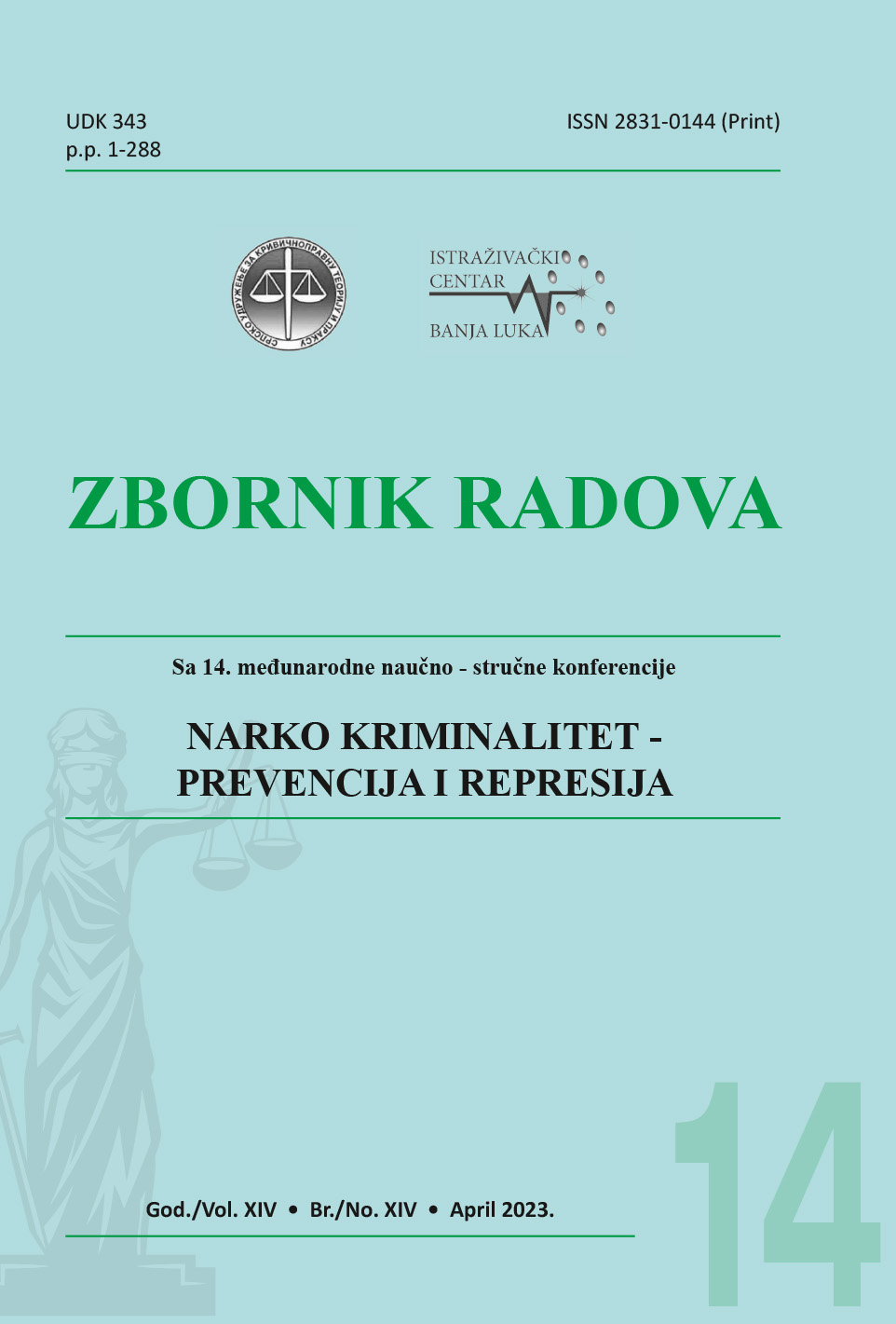DETECTION AND SEIZURE OF DRONES USED FOR ILLEGAL ACTIVITIES
DOI:
https://doi.org/10.7251/CEST1423243DKeywords:
drone, detection, drugs, trade, forensicsAbstract
Thanks to recent technological achievements, a new generation of cheap, small, unmanned aerial vehicles (UAVs) is available. These aircrafts, which are often called drones, enable unprecedented applications, but at the same time new threats related to their possible misuse (e.g. drug smuggling, terrorist attacks, espionage) are emerging.
The drone is usually small, with the ability to fly very quickly in a maneuver, which makes these aircrafts a category of targets that are much more difficult to detect compared to traditional aircrafts. These aircrafts can be used within the airspace of one country or in the border zone, that is, in the areas under the jurisdictions of several countries. In this context, systems for detecting, recognizing and stopping drones face numerous problems.
Many police and military organizations are trying to draw experience from the use and suppression of the use of drones from Iraq, Afghanistan and Ukraine in order to take appropriate measures to combat their abuse. Since the use of drones is becoming more and more popular for economic, scientific, sports and private purposes, the issue of their safety and the need for adopting legal regulations to prevent possible incidents has become an actual issue.
This paper discusses the main challenges related to the problem of drone identification, which include detection, possible verification and classification. The focus is on methods of detection, verification and stopping and confiscation of drones that perform illegal activities. In this regard, an overview of the most relevant technologies, which in modern surveillance systems are placed in a network of spatially distributed sensors, is given in order to ensure complete coverage of the monitored area. More precisely, the main focus is on key technologies due to their low cost and ability to operate over relatively long distances.
